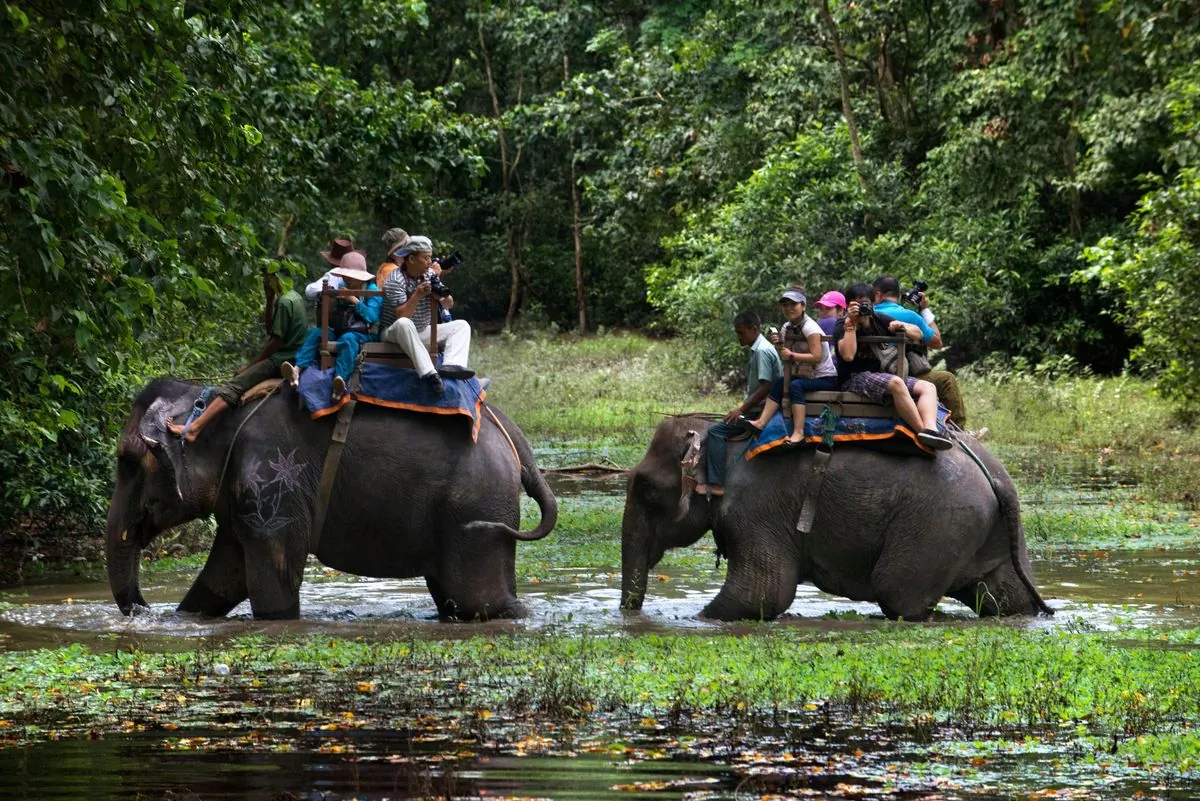Nepal's Wildlife Conservation Dilemma: Balancing Justice and Tradition
Nepal's Supreme Court ruling challenges elite wildlife trophy displays, aiming to enforce conservation laws equally. The decision marks a pivotal moment in the country's struggle against illegal wildlife trade and social inequality.

In August 2016, conservationist Kumar Paudel stumbled upon a startling sight: a former Nepalese prime minister's televised interview featuring a prominent tiger pelt in the background. This discovery sparked a journey that would challenge Nepal's approach to wildlife conservation and expose the stark disparities in law enforcement.
Nepal, renowned for its rich biodiversity, has long grappled with the complexities of wildlife protection. The country boasts 12 national parks covering 11% of its land area and is home to iconic species such as the Bengal tiger, one-horned rhinoceros, and Indian elephant. Despite implementing some of the world's strictest wildlife crime laws in 1973, Nepal has struggled with uneven enforcement.
Paudel's research, conducted between 2016 and 2017, revealed a troubling pattern. Of the 116 prisoners convicted for wildlife crimes he interviewed, over half lived below the poverty line, and 75% belonged to Indigenous communities. This stark contrast between the treatment of impoverished offenders and the elite's casual display of illegal trophies highlighted a deep-rooted issue in Nepal's conservation efforts.
"We are expendable and poor and desperate for money. There are many like us."
The country's wildlife crime challenges are rooted in its history. Trophy hunting, once a diplomatic tool and status symbol, drove many species to near extinction. Although Nepal banned hunting in 1972 and enacted comprehensive conservation laws the following year, the legacy of this practice lingers.
Nepal's conservation successes are noteworthy. The country achieved zero rhino poaching for the first time in 2011 and has doubled its tiger population since 2010. Forest cover increased from 39.6% in 1999 to 44.74% in 2015. However, the illegal wildlife trade remains a significant threat, often operating covertly and catering to demands for traditional medicine and luxury decor.

Determined to address this disparity, Paudel took legal action. After years of lobbying and facing threats to his career, he filed a petition with Nepal's Supreme Court in May 2018. Five years later, in May 2023, the court ruled in his favor, mandating the government to enforce conservation laws and seize illegal wildlife parts, regardless of the offender's social status.
This landmark decision presents both opportunities and challenges. While it aims to ensure equitable treatment under the law, implementation faces hurdles rooted in Nepal's historical and social context. The lingering effects of royal impunity and the practical difficulties of investigating private possessions pose significant obstacles.
As Nepal prepares to enact these new rules later in 2024, the country stands at a crossroads. The Supreme Court ruling marks a crucial step towards balancing justice and tradition in wildlife conservation. However, true progress will depend on the government's ability and willingness to hold all offenders accountable, regardless of their socioeconomic status.
Nepal's unique community-based conservation model and innovative anti-poaching strategies, including the use of unmanned aerial vehicles, demonstrate the country's commitment to protecting its diverse wildlife. With over 200 mammal species, 867 bird species, and 6,000 rivers and rivulets crucial for wildlife habitats, the stakes for effective conservation are high.
As Paudel reflects on this long journey, he remains cautiously optimistic. "True justice will prevail only when governments and their law enforcement agencies hold accountable those who drive the demand for illegal wildlife trade," he asserts. The path forward may be complex, but Nepal's efforts to reconcile its conservation laws with social realities could serve as a model for other nations facing similar challenges.


































